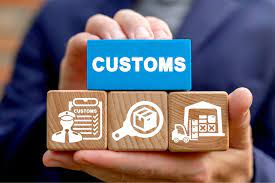


FintaxEasy was incorporated in 2021, by highly credentialed professionals with specialized experience across M&A Advisory, Operations & Risk Consulting, Asset Management, Financial Accounting, Audit and Process Re-engineering.
Customs duty refers to the tax imposed on goods when they are transported across the borders. In simple terms, it is the tax that is levied on import and export of goods. The government uses this duty to raise its revenues, safeguard domestic industries, and regulate movement of goods.
The rate of Customs duty varies depending on where the goods were made and what they were made of. It is either specific or it is based on the value of goods.
Custom duty in India is defined under the Customs Act, 1962, and all matters related to it fall under the Central Board of Excise & Customs (CBEC).

In Budget, the government announced a many changes to Customs duty in order to meet multiple objectives, including promotion of clean energy, curbing non-essential imports, boosting domestic manufacturing and raising revenue. Customs duty was cut on several inputs to incentivise domestic production and increased on finished products to garner additional revenues.
An import is a good or service bought in one country that was produced in another. Imports and exports are the components of international trade. If the value of a country’s imports exceeds the value of its exports, the country has a negative balance of trade, also known as a trade deficit.
Exports are goods and services that are produced in one country and sold to buyers in another. Exports, along with imports, make up international trade. Instead of confining itself within its geographical borders, countries often intentionally seek external markets around the world for commerce, allowing greater revenue and transactional opportunities.
Exports are incredibly important to modern economies because they offer people and firms many more markets for their goods. One of the core functions of diplomacy and foreign policy between governments is to foster economic trade, encouraging exports and imports for the benefit of all trading parties.
Export agreements are often heavily strategic, with countries exchanging agreements to ensure their own country can not only receive the goods they need via export but can distribute goods for more domestic revenue via imports. Also, consider how governments may use exports as leverage over political situations. In response to the war in Ukraine, the White House issued an executive order prohibiting both the importation and exportation of certain goods from Russia.
Companies often measure their net exports which is their total exports minus their total imports. Net exports is a component of measuring a country’s gross domestic product (GDP), so exports play a factor in determining a country’s financial and economic well-being.
Good may be sent via direct exporting or indirect exporting. Direct exporting entails working directly with the importer. The exporting company will handle all of the client communication; as a result, they do not pay a middleman fee. Because the direct export method may require teams with specialized knowledge, many companies opt to contract out a middle party to facilitate an indirect export.
